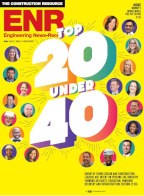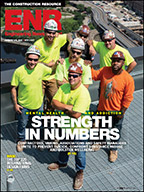Design and construction firms are in for a shock when the long-predicted dearth of qualified job candidates impacts them, but few are doing the right things to recruit new employees or retain valued ones already on the payroll. A combination of clashing cultures between older and younger staffers and lack of knowledge management contribute to the looming problem.
 |
| CORLEW |
Firms still can turn these situations around by taking a few fundamental steps, but they’d better start now. That was the message delivered last month in two education sessions held at the “Build Business” conference in Washington, D.C., conducted by Society for Marketing Professional Services (SMPS) and Professional Services Management Association. More than 1,000 people attended the conference, a record for the annual event.
Original research conducted for the SMPS Foundation shows that firms are losing knowledge gained from experience on each project as older employees leave and experienced staffers change jobs. Few firms are addressing the problem, and those that do are mostly a handful of larger firms. “There is precious little being done” to capture and distribute knowledge and experience from project to project, says Sally Handley, president of Sally Handley Inc., Passaic Park, N.J., who conducted the research. “Knowledge management [KM] is becoming increasingly important for survival.”
Of the 254 SMPS members who responded to the survey conducted earlier this year, 27% said they had a formal KM program in place. Over three-quarters of respondents said recruiting had become increasingly difficult, and nearly half said retaining existing staff also has become more difficult in the past three to five years.
“By the time you realize you’ve got a problem, it may be too late,” says Handley. “Even if baby boomers weren’t retiring, the need for knowledge that’s learned on the project is vital.”
Baby boomers, now aged 43 to nearly 62, are career-driven, willing to work long, hard hours and are “willing to take the risk of extending loyalty to their employers,” Underwood said. Younger generations have seen their parents laid off from jobs despite their loyalty and hard work and are distrustful of employers.
They work hard but not in the same way. They like to be given a task and be left alone to complete it, he said. Money motivates them less than a work-life balance. Older managers need to explain the “whys” of time demands, offer mentoring, not micromanage and reward younger workers with a fun atmosphere during working hours but not ask them to stay past that, said Underwood.
|
|
%
|
|
|
Yes
|
No
|
|
|
Does your firm anticipate future staffing problems due to pending retirements? |
37
|
63
|
|
Does your firm have a formal knowledge management program in place? |
27
|
73
|
|
Has your firm conducted a workforce assessment to develop a current and future inventory of required knowledge and skills? |
29
|
71
|
|
Have you revamped your benefits package within the past 3 to 5 years in order to improve retention and/or recruitment of staff? |
56
|
44
|
|
Are you planning to revamp your benefits package within the next 3 to 5 years in order to improve retention and/or recruitment of staff? |
45
|
55
|
|
Do you offer or are you planning to offer flexible work situations to accommodate employees 62 and older? |
52
|
48
|
|
Does your firm have a succession plan? |
49
|
51
|
|
Are any key client relationships in jeopardy if a particular staff member retires or leaves the firm? |
59
|
41
|
|
Source: SMPS Foundation, based on responses from 250 architectural, engineering and construction firms |
||
“But this [younger] protected generation enters the workplace with a false sense of entitlement and are way too cocky,” he said.
The key to managing the four-generation workplace is flexibility. “Everything is in play when it comes to work arrangements right now,” he said.
The 5,700-member SMPS just completed its first year of a long-term strategic plan with two major tenets, demonstrating the value of marketing to the industry and establishing the skill sets for each level of marketing and business development, says in-coming SMPS President Donna Corlew, marketing director for Looney Ricks Kiss architects, Nashville.
The association will hold more regional conferences since “the majority of members will never come to the national conference,” she says. It also will address the differences between marketing and business development. “We’ve begun to see more integration in firms,” she says. “We [in marketing] bring a business expertise to the practice that they may not already have.”
Nearly 60% said key client relationships are in jeopardy if a particular staff member retires or leaves. About half said they do not have a succession plan in place and about half offer or plan to offer flexible work options for older employees. With four generations working simultaneously in most firms, the differing cultures and motivations are creating challenges in recruiting and retaining staffers, said Chuck Underwood, founder and CEO of The Generation Imperative Inc., Cincinnati. Core values instilled in formative years guide all aspects of our lives, including in the workplace. When one generation tries to recruit or manage another with differing values, clashes occur and poor performance or indifference can result, he said.



